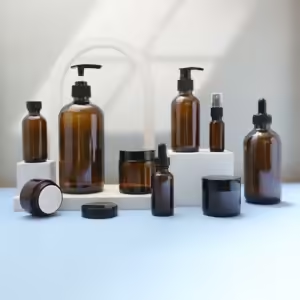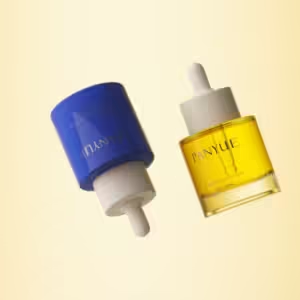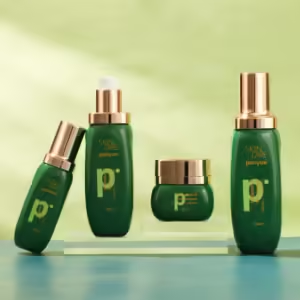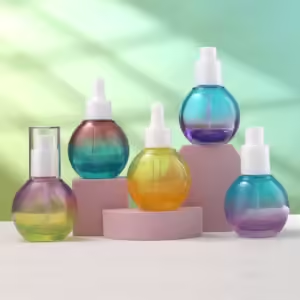When packaging skincare and cosmetic products, the choice of bottle plays a crucial role not only in the product’s appearance, but also in its preservation and functionality, of the many available packaging options, airless pump bottles and traditional pump bottles are two of the most common choices, and both types of bottles have their advantages and disadvantages. In this blog, we’ll take an in-depth look at how airless pump bottles and traditional pump bottles work, as well as how to pick the right pump bottle packaging for you.
Introduction to Airless Pump Bottles
Working Principle of Airless Pump Bottle
Products packaged in airless pump bottles do not introduce air into the bottle during use. Instead of using a traditional tube or straw to dip into the product, airless bottles use a piston or diaphragm system at the bottom of the container. As you pump the product, the piston moves upward, pushing the product to the top and ensuring it stays protected from air exposure during use. By preventing air from entering, it helps to reduce the risk of oxidation and contamination and retains the active ingredients of the product.
Components of an airless pump bottle
- Bottle body: The outer shell of an airless bottle can be made from a variety of materials, such as plastic or glass, to provide protection and attractive packaging.
- Pump mechanism: The pump is the heart of the airless system. It operates through a pressurized distribution system in which the pump is connected to a piston or diaphragm. When you press the pump, the piston moves upward, creating enough pressure to force the product upward without drawing air into the bottle. The pump mechanism ensures that the product is dispensed in a controlled amount, thereby reducing waste and improving the user experience.
- Airless Piston: The piston is typically made of a flexible, durable material that moves with the product inside the bottle. As the piston rises, it creates a vacuum effect that pushes the product into the nozzle. The piston is critical to keeping the package “airless”, ensuring that no air enters and ruins the product’s formula.
- Nozzle: The nozzle is the final component in the flow of product from the bottle. It is designed to evenly distribute the product and minimize waste. Most airless bottles have a small, precise nozzle that controls the dispensing of creams, serums, or lotions. Some nozzles are also anti-drip to ensure that no product is left behind after use.
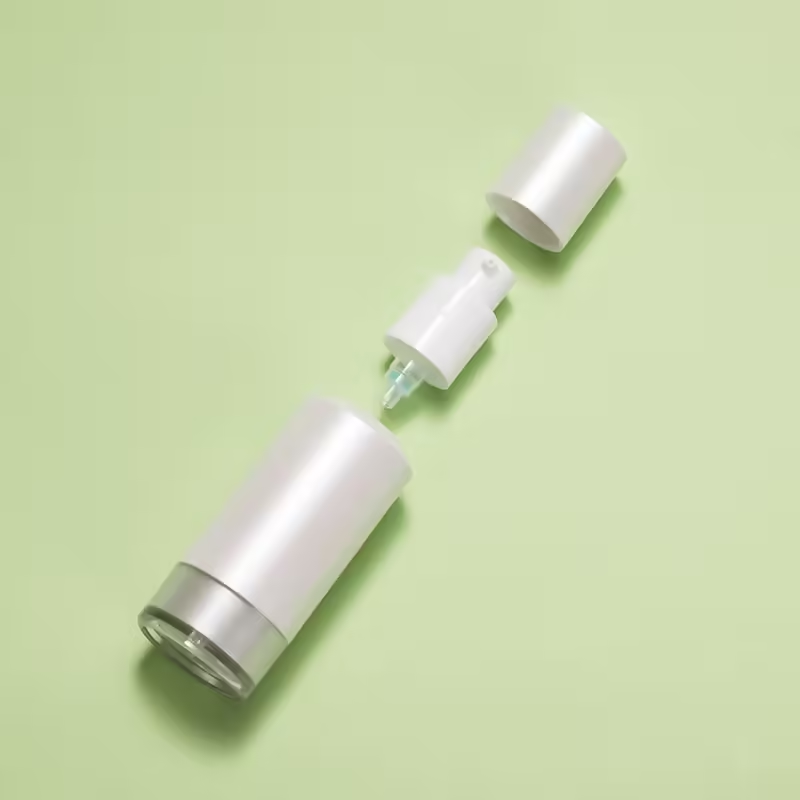
Advantages of airless pump bottles
- Longer Shelf Life: One of the most significant advantages of airless pump bottles is their ability to extend the shelf life of skin care products. The airless technology inside the bottle prevents contact with air, which causes oxidation and degrades sensitive ingredients like vitamins, antioxidants, and peptides. By preventing oxygen from entering, airless bottles help to maintain product freshness and potency over a longer time, ensuring that your skincare retains its full potency until the last drop.
- Hygienic and Reduced Contamination: Traditional skincare packaging, especially those with open containers or jars, can lead to contamination through repeated exposure to air and fingers. Airless pump bottles, on the other hand, feature a sealing system that prevents external contaminants from entering the bottle. This feature makes them ideal for products that require a high degree of hygiene, such as serums, moisturizers, and other skin care formulations that may be prone to bacteria growth when exposed to the environment.
- Better maintain formula effectiveness: Many of the active ingredients in skincare products, such as retinol, vitamin C, and hyaluronic acid, are highly sensitive to light, heat, and air. When exposed to oxygen, these ingredients break down and lose their potency and effectiveness. Airless pump bottles seal and protect the formulation inside from harmful elements, helping the product retain its full potency for longer. This is crucial for skincare products that deliver targeted benefits, such as anti-aging or acne treatments.
Introduction to traditional pump bottles
How traditional pump bottles work
Traditional pump bottles work through a pressurized dispensing system. When you depress the pump, a spring-loaded mechanism pushes the product into a straw or tube inside the bottle. As the pump activates, the tube extends into the liquid at the bottom of the container, pulling it upward through the pump mechanism and out through the nozzle. However, this process exposes the bottle to air, increasing the risk of oxidation and bacteria, especially with frequent use.
Advantages of traditional pump bottles
- Affordable and suitable for high volume generation: For companies that mass produce products, traditional pump bottles offer a more affordable packaging option. The ability to mass produce traditional pump bottles at a lower cost allows manufacturers to price their products competitively while maintaining reasonable profit margins.
- Wide range of applicable products: Traditional pump bottles are versatile and can hold everything from lotions to hair care products, hand sanitizers and even cleaning solutions. Its simple design makes it versatile across various industries, offering an excellent, adaptable packaging solution for brands.
- Traditional pump bottles feature a simple design, making them easy to manufacture with fewer complex components than airless bottles. This simplicity not only helps reduce production costs but also makes the packaging more user-friendly. Consumers are familiar with pump bottles, making them easy to use and understand. Whether the bottle is for shampoo, body wash, or facial cleanser, the traditional pump dispenser is intuitive and widely accepted.

Which one is right for your cosmetics or skin care products?
Choosing between airless pump bottles and traditional pump bottles ultimately depends on several factors, including your product type, business size, and budget. Let’s explore when each packaging option is ideal to help you make an informed choice that fits your brand’s unique needs.
Product Type
Airless Pump Bottles: Ideal for thick creams, serums, anti-aging products, and luxury skincare lines.
Traditional pump bottles are ideal for lotions, gels, shampoos, and body washes that are less sensitive to air exposure.
Business Size and Budget
Small Brands: If you are a start-up or small skincare brand on a tight budget, traditional pump bottles offer an affordable packaging solution. They allow you to focus your resources on other areas such as marketing and product development.
Large Brands: Larger skincare or cosmetic brands with higher budgets may find it worthwhile to invest in customized airless pump bottles, especially if they offer a more refined product line. The ability to create a premium experience can increase brand awareness and loyalty among consumers.
Brand Positioning
Luxury or high-end brands may opt for airless pump bottles to highlight quality, while affordable brands may find traditional pump bottles better suited to their market.
Conclusion
Choosing the right packaging for your cosmetic or skin care product is an important step in ensuring its success in the market. The choice between airless and traditional pump bottles depends on several key factors that affect product preservation, user experience, and brand recognition.
Whether you’re looking for airless pump bottles, traditional pump bottles, or a bespoke solution, contact our team of packaging experts and we can provide you with a quote and expert advice on the right packaging options for your product and business.


